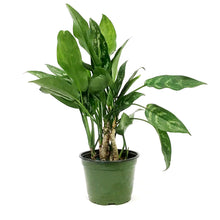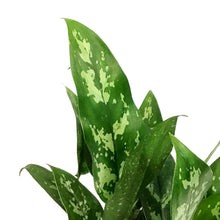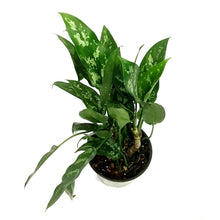Secure and trusted checkout with
Aglaonema Maria is an attractive and dynamic accent plant that has glossy, dark green leaves with distinctive light silvery-green stripes and splotches. This is an easy to take care of plant and is perfect for beginners or for placing in areas with low levels of light.
If you need any more photos or additional information on this product, send us a message using the chat button on our website with the product name, and we will get back to you as soon as possible.
This plant has a representative product photo and the item you will receive may not be exactly as shown.
Attributes
Type: TropicalHeight: 12in - 36in
Spread: 10in - 24in
Light: Partial Sun
Water: Medium
Zone: 10 - 11
Pet Safe: These plants can cause irritation if ingested, and the sap is a skin and eye irritant. Keep out of reach of pets and children.
Care
General Maintenance: This plant may require repotting once a year, preferably in the spring. Does not require pruning other than for aesthetic purposes.Temperature: Prefers temperatures of 18° - 27° Celsius. Ensure temperatures do not drop below 15°.
Light: Tolerates low to bright levels of indirect light. Prefers a bright, indirect light location.
Watering: Water once the top 1in - 2in of the soil feels dry. Do not overwater. Aglaonema appreciate some humidity, but can tolerate less that other tropical plants. For best results, use a pebble tray filled with water underneath your plant or mist once a week. Reduce watering in winter months.
Soil: A peat-based potting soil with lots of perlite works best. As well, consider mixing in a bit of a bark-based orchid mix. Keep your soil loose and not too densely packed into your pot. Prefers nitrogen rich soil.
Fertilizer: Use a slow release fertilizer once a month during the growing season.
| SKU | Inventory |
| Item (123456397224) | 2 in stock. |






